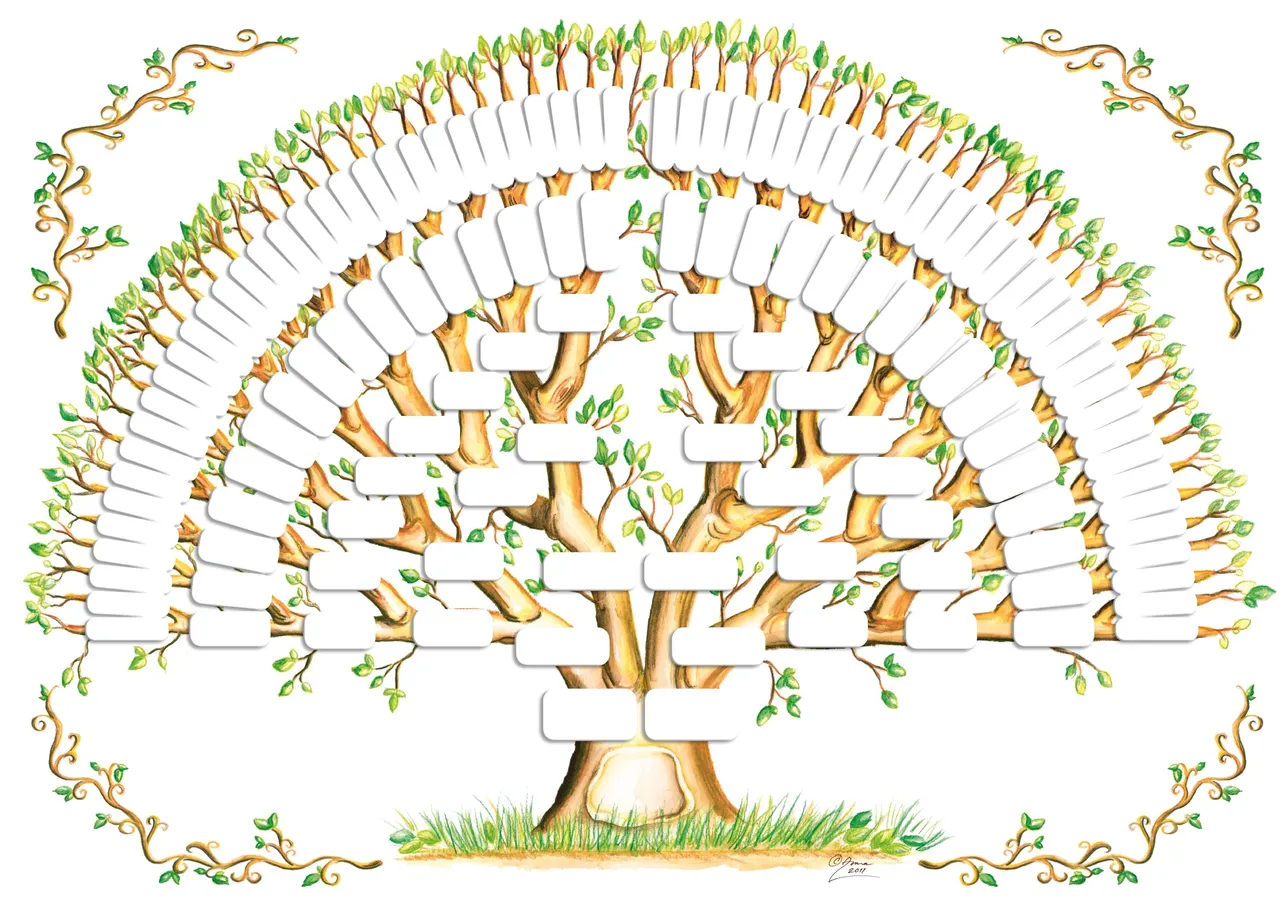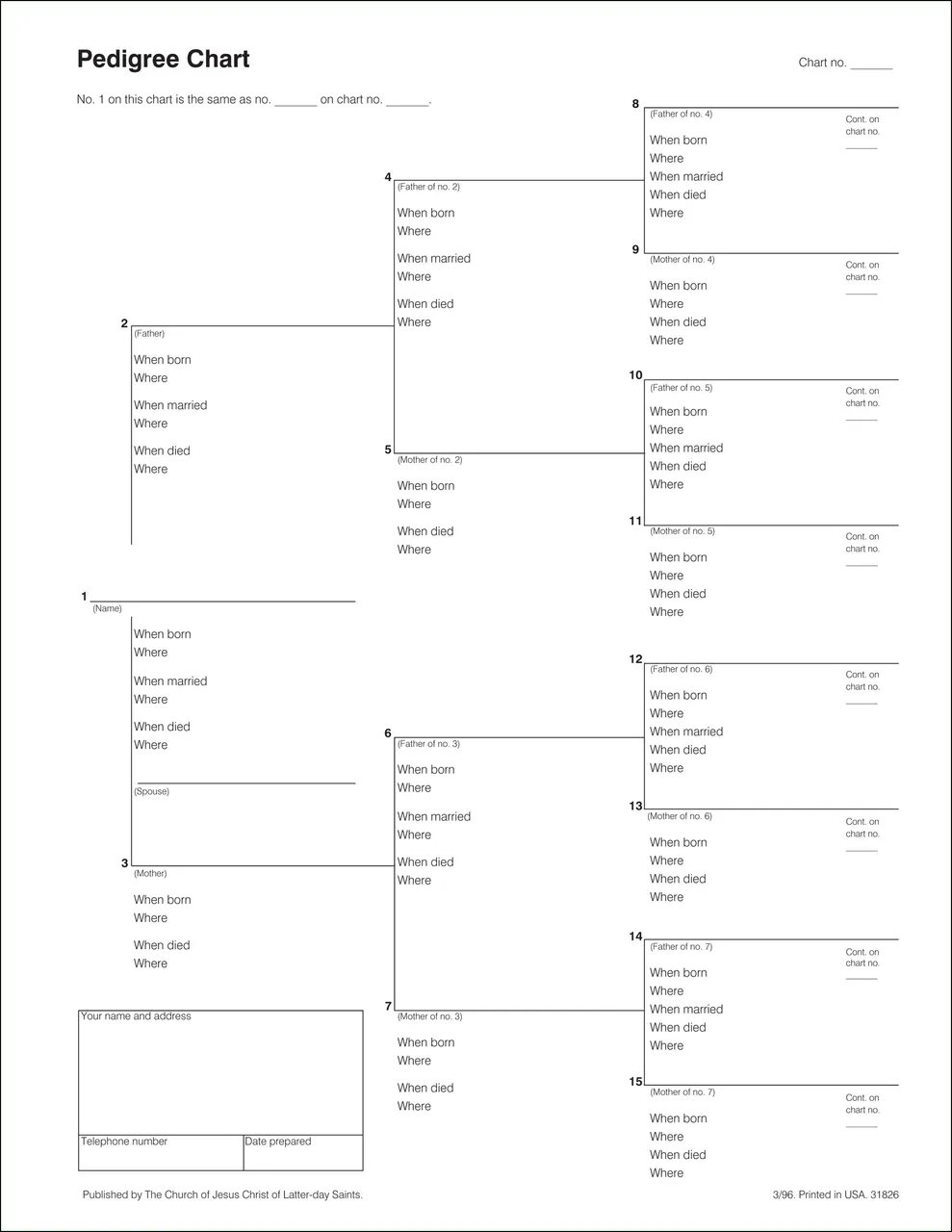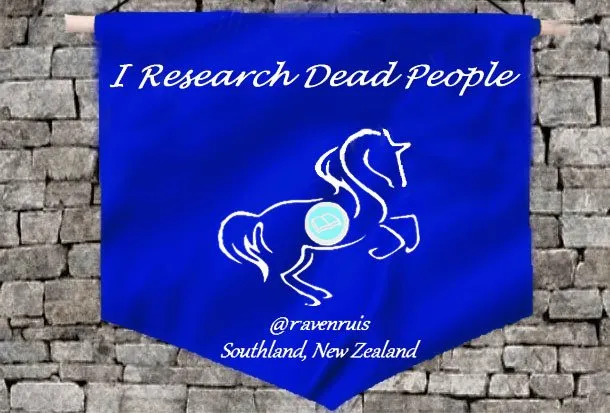 image source
While genealogical research can become more intricate, starting your own family tree research isn't all that difficult - assuming you aren't adopted or your circumstance of birth isn't more complicated, of course.
The first thing to recognise is - you probably know more than you realise!
image source
While genealogical research can become more intricate, starting your own family tree research isn't all that difficult - assuming you aren't adopted or your circumstance of birth isn't more complicated, of course.
The first thing to recognise is - you probably know more than you realise!
One good starting point is to print off a blank Ahnentafel chart - there are numerous free downloads available via the net, but I would recommend choosing one which has only 4 generations, and includes the vital records so you remember what you need to fill in (unlike the decorative tree pictured above).
 image source
Now you have a chart to fill in, I'd highly advise using pencil unless you know for absolute certainty a fact is correct. You may be surprised that things you think you know turn out to be untrue.
image source
Now you have a chart to fill in, I'd highly advise using pencil unless you know for absolute certainty a fact is correct. You may be surprised that things you think you know turn out to be untrue.
(Always keep an open, nonjudgmental mind when researching or you might find family members clam up and refuse to help you.)
Start with yourself at position One. If you want to do charts for your children, I'd use a second chart like this for their 'other' side of the family - unless there are matching ancestral lines on both sides, such as when cousins have married.
Basic data to fill in for each person going into your chart are the births, marriages, and deaths (and places of each). If you are lucky, each family member may have certificates to back up their information.
Ask nicely if you can take a scan, photocopy, or photo of their documents to be able to keep a copy with your research. Proof is very important in genealogical work.
If you are lucky enough, you will be able to collect enough information to fill in the whole chart, but if not ... well, research is half the fun! When you find there are gaps in the tree which you just cannot fill in yourself, then it is time to approach willing relatives. Always be polite, and respect their wishes if they are not open to sharing what they know (or they simply may not know some things). At this stage you may consider incorporating some oral history collection, but I will leave this for another lesson. If they had experiences during the war then this is another part of their lives they may be unwilling to talk about, as frustrating as that is to your research.

image source
You may wish to go back further than just the four generations, which is great. It is easy enough to find a 6- or even 8-gen blank chart to print off, but if the genealogy bug is really taking hold you might want to consider choosing one of the many available software programmes which will give you a digital tree to work with.
You are likely to have heard of at least one of the major companies in the ancestral research game - such as Ancestry, Find My Past, My Heritage - and they all offer on-site digital tree creation & storage. There is nothing wrong with having a copy of your tree in these places (you can even set them to private rather than giving public access to all your information), but I will always strongly recommend you keep your master copy on your own computer.
Keeping your original research on your own computer is, in my opinion, the best way to safeguard your tree - although you should always have backup copies stored elsewhere.
Same with paper records - at the very least, scan and store copies of all your papers and photos away from the house in case disaster strikes. Do backups regularly.
Another good reason to have the master copy on your own computer (or paper files) is for greater control over your own work. If, for any reason, you stop having a subscription to one of the online facilities - or it disappears from the net entirely - you still have full access to your own work.
Also, you can choose who can see your work (there are data miners out there who don't care if people belong in their tree or not, they just want to scoop up everyone and grow one giant tree full of inaccurate research!); you can send copies to relatives without them having to also have paid subscriptions to any of those sites. In the end, choose the best option that works for you.
There is a saying that goes something like "when a person dies, a whole library dies with them". Starting your family tree now, rather than at some nameless point in the future, helps ensure that library is preserved, even just a little.
If you would like any help with your research, read my post here for a guide on what I do.

 image source
image source image source
image source

